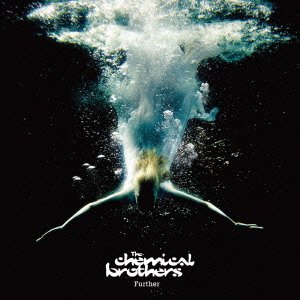
The Chemical Brothers
Further
Release Date: Jun 22, 2010
Genre(s): Electronic
Record label: Astralwerks
Music Critic Score
How the Music Critic Score works
Album Review: Further by The Chemical Brothers
Fairly Good, Based on 11 Critics
Based on rating 86%%
Electronic pioneers The Chemical Brothers’ new album is everything at once: swirling, dizzying, disorienting and hypnotizing. The requisite compressed breakbeats, moderate tempos, synthesizer-generated loops and distorted bass lines are present, but what makes Further more cinematic and expansive than its predecessors is Tom Rowlands’ and Ed Simons’ courageousness—that good ole English chutzpah—to explore the possibility of sound itself: the depth, the minutiae and the limitlessness. The music never overwhelms (“Another World”) and always pleases (“Swoon”), which is likely a testament to their 15-year bond as big beat virtuosos.
Based on rating 8.0/10
Back when people were still figuring out what electronic dance albums were supposed to be, the Chemical Brothers worked out a durable and recognizable formula, and they stuck with it: dancefloor bangers up front, woozily expansive psychedelic tracks at the end, big-name collaborations wherever possible. That formula served them well through three classic albums (Exit Planet Dust, Dig Your Own Hole, and Surrender) and one pretty good one (Come With Us). But they stuck with it two albums too long.
Based on rating 4/5
Thirteen years and seven albums in (the last two of which weren't great), the Chemical Brothers have regained some of their past glory. This stripped-down effort forgoes the high-profile collaborations we've come to expect to create an unstrained, repetitive thumpathon that fits right into their catalogue. [rssbreak] On Snow, the closest thing to a collab, vocals by Stephanie Dosen counterbalance the SETI signal-into-space beeps.
Based on rating 7/10
After making a couple of successful yet guest-heavy and unimaginative records, The Chemical Brothers have entered the new decade with something different. Gone are the big singles, the zeitgeist tapping guest vocalists and misjudged attempts at appearing on trend, which have been replaced with ambition and sonic exploration. Further is very much a cleansing record for the duo, as they shed some of their commercial baggage and return to making music for the love of doing so.
Based on rating 3/5
The Chemical Brothers have slightly changed their way of working on their seventh album. Gone – apart from a snatch of Stephanie Dosen on the opening, hymnal Snow – are the celebrity guest vocalists, with Tom Rowlands occasionally singing instead. Conceived to accompany digital films, the eight tracks have been designed to ebb and flow like one of their pulverising live sets.
Based on rating 5.9/10
No forward motion On 1997’s Dig Your Own Hole, The Chemical Brothers did just that. Arguably the best big-beat album from the best 90’s electronic squad (sorry, Prodigy), Hole set a benchmark that the duo has failed to live up to for the last 13 years. Their seventh LP attempts to recapture the metallic sheen of their heyday, and though there are no “Block Rockin’ Beats” here, it’s not for lack of trying.
Based on rating 5/10
Further is the first Chemical Brothers album without a guest vocalist since their debut. Consequently, with no worries about crafting tracks around a Q-Tip or Richard Ashcroft, the duo has full freedom to focus on enveloping listeners in the sound world usually just experienced at its shows -- although, naturally, without the lights and atmosphere to accompany the music. After a beatless first track titled "Snow," the 12-minute single "Escape Velocity" approximates a rocket launch, the impressive effects continually rising over the first few minutes until the beat kicks in with full force.
Based on rating 5/10
It wasn’t supposed to be like this. It wasn’t supposed to be like this at all. Back in 1997, the Chemical Brothers were the kings of the still-thriving big-beat “electronica” movement that tried ever so hard to dominate the American music landscape in the mid-to-late ‘90s. Dig Your Own Hole, the duo’s crowning achievement, showed a surprising amount of eclecticism despite being rooted in a simple 4/4 club template, the album spawning dance hits (the Grammy-winning “Block Rockin’ Beats”), instant modern rock classics (the thrilling Noel Gallagher collaboration “Setting Sun”), and epic psychedelic rushes (the aptly-titled “The Private Psychedelic Reel”) without as much as breaking a sweat.
Based on rating 2.0/5
The Chemical Brothers’s entire discography post-Come with Us seems cursed by bad timing. They were cheerfully lightweight when they most needed to violently bounce off the walls, cheeky and irreverent when dance music was really getting sincere with itself, unapologetically pop when the rock guitars they built their empire on were most in vogue, and now they’ve gone and ditched their standard vocal collaborations the same year that Betty White’s publicists have made her available for everything from Latin hustles on Saturday Night Live to getting paper cuts at the GayVN Awards. Ah, the hotness in Cleveland-upon-Thames that could’ve been.
Opinion: Excellent
The Chemical Brothers show no signs of fatigue on their seventh LP. Ian Wade 2010 The Chemical Brothers were always a step ahead, a step Further (ho ho) if you will. While their contemporaries crashed, burned, and then possibly reformed, Tom Rowlands and Ed Simons have kept their material fresh for six – five of which have been chart-toppers – studio albums of high-quality shape-throwing, and there’s no reason given here why they should throw in their rave towels now.
Opinion: Excellent
If you can take what The Chemical Brothers had done with their immense catalog and appropriately justify their significance, you don’t need to look any further than their first two masterpieces, Exit Planet Dust and Dig Your Own Hole. With those two albums, alone, they were the trailblazers for what would become the Big Beat genre and they encapsulated what a lot of the 90s electronic scene consisted of. While everyone else was running around trying to figure out just how to make electronic albums, The Chemical Brothers had developed their own formula.

